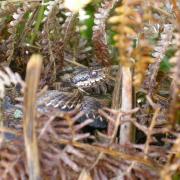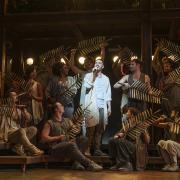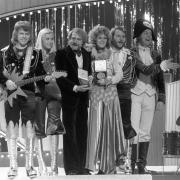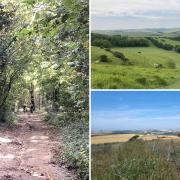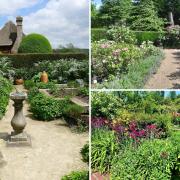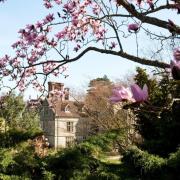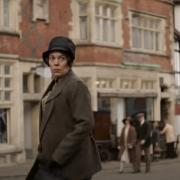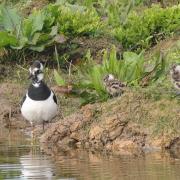Aaron Millar set out on a mission to do a pub crawl along the whole of the South Downs Way – a 100-mile trek. Here he recounts the last part of his walk in Sussex from Amberley to Beacon Hill
It is the last section of my pub crawl through Sussex on the South Downs Way – the national trail that starts in Eastbourne, crosses the length of the county, and ends at Winchester, in Hampshire, 100-miles down the trail. I set off in celebration of the South Downs National Park Authority’s first birthday on April 1, when it became fully-functional for the first time – bunking up in the best pubs on the Way each night and raising a glass in a few en route too. So far it has been a four-day adventure. I have suffered a shoeless night walking through fields of cow dung and stingy nettles, and rain so bone-drenchingly wet that not even a submarine would have kept me afloat. But I’ve also been captivated by the gentle rolling beauty of the South Downs and inspired by its rich and fascinating history. I’ve been welcomed into each local pub with open arms, happily replenishing walked-off calories on the finest Sussex food and locally brewed real ale. I have two days left. before leaving the county and I can’t wait. Pub crawls simply don’t get better then this. After a delightful breakfast watching early morning deer graze across the Wild Brooks from the conservatory of The Sportsman in Amberley, I slung my bag over my shoulder and headed towards the start of Bignor Hill, or what local mountain bikers ominously refer to as the Wall of Death. Slide of death may have been a more apt description however, as yesterday’s rain poured down the chalky path making each step up a doomed exercise in not sliding down. Sadly the route here did not allow for a lunchtime pub stop so once I’d conquered the ‘wall’ I stopped to picnic on its top, soaking up some of its history as I did. Most notably Bignor Villa, just down from the summit of the hill and well worth a visit. “The villa dates from the 3rd century AD,” manager Lisa Hayes tells me, “and was found accidently by George Tupper in 1811 while ploughing his field, and it’s still maintained today by the Tupper family. So it’s our 200-year anniversary and a big year for us.” From here I followed the path of Stane Street – the old Roman road that once ran from Chichester to London – before entering the quiet orange and mossy green woodland of Graffham Down to make my final descent towards Cocking for the night. Just over halfway through my trip and my body was demanding a treat – thankfully The Bluebell did not disappoint with the kind of rooms that it’s a shame to sleep in alone, leather sofas by the fire and gourmet, locally-sourced food. I’d passed a lot of cows during the last four days – making sure (in the madness that comes with spending too much time alone) to say hello as I did. So it was therefore with much guilt that I enjoyed my 21-ounce rib-eye steak as much as I did, washing it down with a large red and groaning out loud with delight.The next morning, following the most aesthetically pleasing fruit salad known to man, I marched on towards the views of Beacon Hill with the sun and a smile on my face. After a long stretch of churned up arable land, I entered the peace of the forest once more – sunlight slipped through the canopy of arched branches like spotlights of slender fingers and birdsong filled my ears. Before long I had arrived at the Devil’s Jumps. Looking like giant anthills, these five grass covered mounds are one the best examples of an iron age burial site on the South Downs and date back almost 3,000 years. From here I made much haste towards The Royal Oak in Hooksway, a tiny 15th century pub tucked away in a sunlit hamlet in the middle of the forest and only a few minutes off the Way. I sipped my ale watching rainbows dance across the walls as the sun shone through a crystal prism on the window, wondering if the booze-and-walking combo had finally taken its toll. Or had this delightful pub somehow transported me to the land of the faeries? Such belief was, until the turn of the last century, long held to be true, and there were rumours of the magical creatures causing mischief throughout this part of the Downs. Feeling recharged, but still slightly dazed, I pushed hard to the top of Beacon Hill – jumping for joy off the summit stone as views of humpback ridges already crossed stretched back eastwards into a hazy horizon. High floating cumulus clouds broke the sun into spots of shade and colour across the valley north. I ambled the last few miles of the day, taking my time to enjoy the views before dropping off the high ridge to a flat walk towards the Sussex-Hampshire border.Before I crossed I paused, thinking about the words of Steve Peach, a conservation ranger working within the National Park, to whom I had spoken before setting off on this adventure. I had asked him why the new National Park status was so important. “It gives the South Downs a sense of natural identity,” he told me. “It’s all one ecosystem and you and I are part of it and to make landscapes work properly – in terms of protecting them – you need to think on that eco-system level.”My view is that one of the best things about a long-distance walk is that you get to experience that sense of connection with the landscape for real. You absorb the world slowly, at the pace of your own two feet, and that means you absorb it completely. Walking the South Downs Way, whether in whole or in part, is a tremendous experience and one I wholeheartedly recommend.But I must admit, it’s even better stopping for a few drinks on route.



